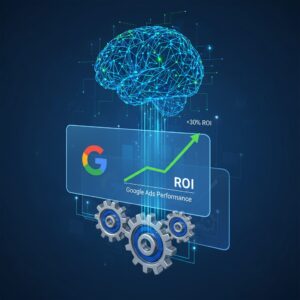
I’ve been running businesses for over two decades, and I can tell you that managing finances used to eat up at least 20 hours of my week. Today, AI tools have cut that time to under 5 hours while giving me better insights than I ever had before.
The financial landscape has changed. Small business owners no longer need to hire expensive accountants for daily operations or spend weekends reconciling spreadsheets. AI tools now handle these tasks with speed and accuracy that humans simply cannot match.
Let me show you how to use these tools effectively in your business.
Why Traditional Financial Tracking Falls Short
You’ve probably experienced this. You spend hours entering data into spreadsheets, categorizing expenses, and trying to make sense of cash flow patterns. By the time you finish, the information is already outdated.
Traditional methods create several problems:
Manual data entry wastes valuable time you could spend growing your business.
Human error creeps into calculations and categorizations.
Reports take days to prepare instead of minutes.
You only see historical data without predictive insights.
Pattern recognition requires expertise most small business owners lack.
I learned this the hard way in my third business venture. I missed a critical cash flow problem because my manual tracking system couldn’t show me the pattern developing over six months. That mistake cost me $47,000 and nearly shut down the operation.
AI tools solve these problems by processing data in real time and spotting patterns before they become critical issues.
How AI Tools Transform Financial Management
AI financial tools connect directly to your bank accounts, credit cards, and payment processors. They automatically categorize every transaction, track expenses, and generate reports without any manual input from you.
The best part is how they learn from your business. After the first month, these tools understand your spending patterns, seasonal fluctuations, and typical cash flow cycles. They use this knowledge to provide accurate forecasts and alert you to anomalies.
Cash flow prediction has become incredibly accurate. My AI tools now predict my cash position 90 days out with 94% accuracy. This allows me to make decisions about hiring, inventory, or expansion with confidence.
Expense categorization happens automatically. The AI learns which vendors belong to which categories and applies rules consistently. You can customize these categories to match your specific business needs.
Invoice processing takes seconds instead of hours. The AI extracts data from invoices, matches them to purchase orders, flags discrepancies, and schedules payments based on your cash flow position.
Tax preparation becomes painless. AI tools track deductible expenses throughout the year and organize them into proper tax categories. When tax season arrives, you simply export the data to your accountant.
Choosing the Right AI Financial Tools for Your Business
Not all AI financial tools work the same way. Your choice depends on your business size, industry, and specific needs.
Start by identifying your biggest pain points. Do you struggle with cash flow forecasting? Does invoice processing take too much time? Are you missing tax deductions because of poor tracking?
Look for tools that integrate with your existing systems. The AI should connect seamlessly with your bank, payment processor, accounting software, and invoicing system. Manual data transfer defeats the purpose of automation.
I use three different AI tools in my current business. One handles expense tracking and categorization. Another focuses on cash flow forecasting and financial planning. The third manages invoicing and payment collection. They all sync with my accounting software automatically.
Consider these factors when evaluating tools:
Setup time should be under two hours for basic functionality.
The interface must be intuitive enough that you don’t need training.
Customer support should respond within 24 hours.
Pricing should scale with your business size.
Security features must include bank level encryption and two factor authentication.
Mobile access lets you check finances and approve transactions anywhere.
Read actual user reviews from businesses similar to yours. Pay attention to complaints about accuracy, customer service, and hidden costs.
Test the tool with a free trial before committing. Most reputable AI financial tools offer 14 to 30 day trials with full functionality.
Implementing AI Tools Without Disrupting Your Business
Implementation determines whether AI tools help or hurt your business. A poor rollout creates more problems than it solves.
Start with one tool and one function. Don’t try to automate everything at once. I recommend beginning with expense tracking because it provides immediate value with minimal risk.
Connect your primary business bank account first. Let the AI categorize transactions for two weeks while you verify its accuracy. Correct any mistakes so the system learns your preferences.
Set aside 30 minutes daily for the first week to review what the AI does. This helps you understand its capabilities and catch any issues early.
Create rules for recurring transactions. Tell the AI how to handle specific vendors, expense types, and revenue sources. These rules improve accuracy and reduce the need for manual review.
Add additional accounts and features gradually. Once expense tracking works smoothly, connect credit cards, then add forecasting, then implement invoice management.
Train your team on the new system. Everyone who handles money should understand how to use the AI tools and what they need to do differently.
Monitor the transition carefully. Compare AI generated reports with your old system for at least one full business cycle. This ensures accuracy before you fully commit.
The implementation of my first AI financial tool took three months from start to full adoption. I could have done it faster, but the gradual approach meant zero disruption to daily operations.
Your financial data becomes more valuable over time. The AI needs at least three months of data to provide accurate forecasts and meaningful insights. After six months, the predictions become remarkably precise.
Budget time for adjustment and learning. You’ll discover new ways to use the tools as you become familiar with their capabilities. Features that seemed unnecessary at first often become essential as you understand their value.
AI tools don’t replace financial knowledge. They amplify your abilities and free you to focus on strategic decisions instead of data entry. You still need to understand basic financial principles and interpret what the data tells you.
The return on investment is substantial. My AI tools cost $180 monthly but save me 15 hours of work each month. At my billing rate, that’s $3,750 in saved time. They’ve also helped me avoid two major cash flow problems that would have cost tens of thousands.
Your business finances deserve the same attention you give to product development and customer service. AI tools make it possible to maintain that attention without sacrificing time you need for growth activities.
Start small, choose carefully, and implement gradually. Within six months, you’ll wonder how you ever managed finances without these tools.
Please check our Business Tips https://thoughts.business/category/business-tips/
Please check our partner site – Why Invest? https://whyinvest.info/





